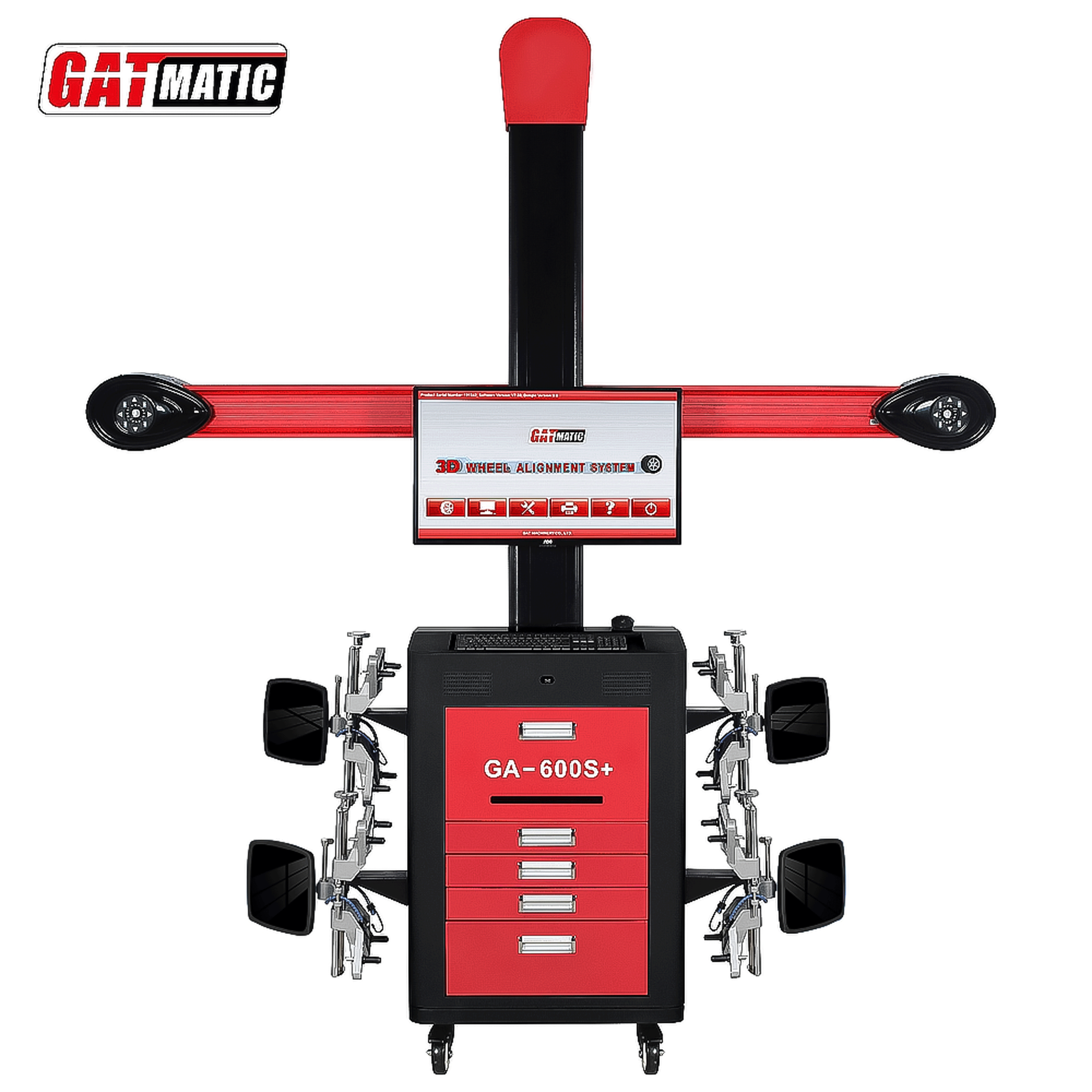Recent Blog
-
CCD Alignment Systems VS. 3D Alignment Systems
2025-04-08 -
What are the main differences between 2D and 3D wheel alignment systems
2025-03-26 -
Is Touchless Wheel Alignment Right for You? Factors to Consider
2025-03-19 -
The Future of Automotive Service: Exploring Touchless Wheel Alignment Technology
2025-03-13
How does a four-wheel alignment improve vehicle performance
I. Introduction
Four-wheel alignment is a critical aspect of vehicle maintenance that involves adjusting the angles of the wheels to ensure they are set to the manufacturer’s specifications. This process is essential not only for the longevity of the vehicle but also for optimal performance. Regular alignment checks can significantly enhance various aspects of a vehicle’s operation, including fuel efficiency, tire longevity, handling, ride quality, and safety. Understanding how four-wheel alignment contributes to these factors can help vehicle owners appreciate its importance and encourage proactive maintenance.
II. Improved Fuel Efficiency
One of the most significant benefits of a four-wheel alignment is improved fuel efficiency. When a vehicle’s wheels are misaligned, it creates increased rolling resistance, which means the engine has to work harder to move the vehicle forward. This extra effort translates into higher fuel consumption. In contrast, proper alignment ensures that all four wheels are working in harmony, reducing resistance and allowing for smoother travel. Studies have shown that maintaining correct wheel alignment can lead to fuel savings of up to 10%, making it a cost-effective measure for any driver.
III. Extended Tire Life
Misalignment can lead to uneven tire wear, which shortens the lifespan of tires and necessitates more frequent replacements. When wheels are aligned correctly, weight is distributed evenly across all tires, promoting uniform wear patterns. This not only extends the life of the tires but also enhances their performance. By investing in regular four-wheel alignments, drivers can save money in the long run by delaying or avoiding costly tire replacements.
IV. Enhanced Vehicle Handling and Stability
Proper wheel alignment is crucial for maintaining excellent vehicle handling and stability. Misaligned wheels can cause steering issues, such as pulling to one side or requiring constant adjustments to keep the vehicle straight. This can be particularly dangerous in adverse weather conditions or during emergency maneuvers. Correct alignment ensures that the vehicle responds predictably and accurately to steering inputs, providing drivers with greater control and confidence on the road. Enhanced handling not only improves driving comfort but also contributes significantly to overall safety.
V. Smoother Ride Quality
A well-aligned vehicle offers a smoother ride quality compared to one with misaligned wheels. Misalignment can result in vibrations and an uncomfortable driving experience, as well as cause the vehicle to pull in one direction. By ensuring that all four wheels are aligned correctly, drivers can enjoy a more pleasant driving experience with reduced noise and vibration levels. This improved ride quality is especially important for long journeys or daily commutes, where comfort plays a significant role in overall satisfaction.
VI. Reduced Wear on Vehicle Components
In addition to affecting tires, misalignment can place undue stress on various suspension and steering components. Over time, this added strain can lead to premature wear and potentially costly repairs if left unaddressed. Regular four-wheel alignments help mitigate these issues by ensuring that all components function as intended without unnecessary stress. By investing in alignment services, vehicle owners can protect their investment and prolong the life of critical systems.
VII. Increased Safety
Safety is perhaps the most compelling reason for maintaining proper wheel alignment. A misaligned vehicle poses several risks, including impaired braking performance and reduced traction, which can lead to accidents. Proper alignment enhances braking efficiency by ensuring that all wheels make optimal contact with the road surface. Furthermore, it improves overall traction, providing better handling during inclement weather or challenging driving conditions. By prioritizing regular alignments, drivers not only protect themselves but also ensure the safety of their passengers and others on the road.
Conclusion
In conclusion, four-wheel alignment is an essential maintenance procedure that significantly improves vehicle performance across multiple dimensions. From enhancing fuel efficiency and extending tire life to improving handling and safety, the benefits are clear. Regularly scheduled alignments not only contribute to a more enjoyable driving experience but also protect against costly repairs down the line. Vehicle owners should recognize the importance of this service and incorporate it into their routine maintenance practices to ensure their vehicles operate at peak performance for years to come.
FAQs
1. What is four-wheel alignment?
Four-wheel alignment is the process of adjusting the angles of all four wheels to ensure they are perpendicular to the ground and parallel to each other. This adjustment helps optimize tire contact with the road, improving handling, stability, and tire wear.
2. How often should I get a four-wheel alignment?
It is generally recommended to have a four-wheel alignment performed every 6,000 to 10,000 miles or whenever you notice signs of misalignment, such as uneven tire wear, pulling to one side, or a crooked steering wheel. Additionally, alignments should be checked after any significant suspension work or if you hit a large pothole.
3. What are the signs that my vehicle needs a four-wheel alignment?
Common signs that indicate your vehicle may need an alignment include:
- Uneven or rapid tire wear
- The vehicle pulling to one side while driving
- A crooked steering wheel when driving straight
- Vibration in the steering wheel or throughout the vehicle
4. How does misalignment affect fuel efficiency?
Misalignment increases rolling resistance, causing the engine to work harder to maintain speed. This extra effort leads to higher fuel consumption. Proper alignment reduces resistance, allowing for smoother driving and improved fuel efficiency.
5. Can I perform a four-wheel alignment myself?
While some basic maintenance tasks can be done at home, four-wheel alignment requires specialized equipment and expertise to measure and adjust wheel angles accurately. It is best performed by a trained technician at an auto repair shop.
6. What are the benefits of regular four-wheel alignments?
Regular four-wheel alignments offer several benefits, including:
- Improved fuel efficiency
- Extended tire life
- Enhanced vehicle handling and stability
- Smoother ride quality
- Reduced wear on suspension and steering components
- Increased safety during driving
Describe Your Needs In Detail!
We will carefully evaluate your needs and give professional solutions.



